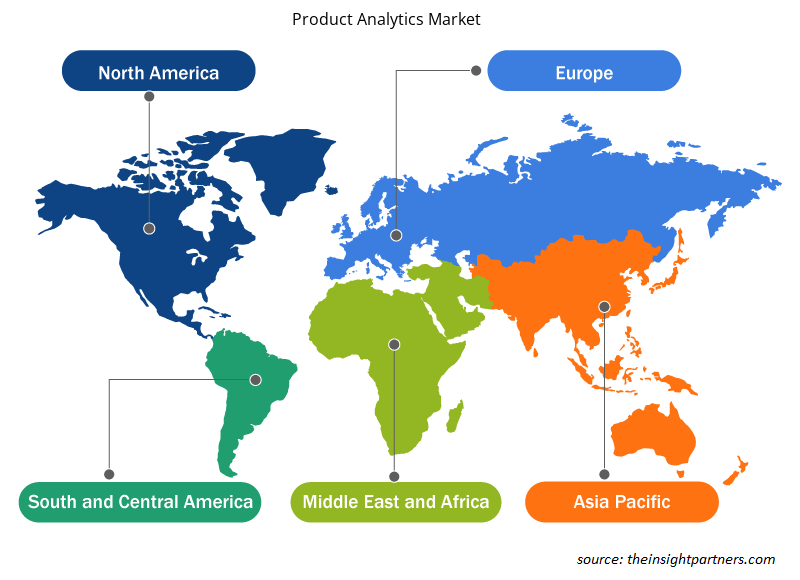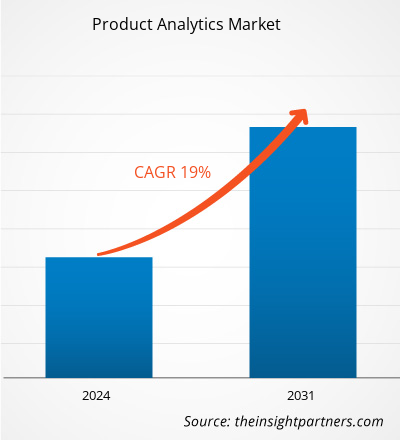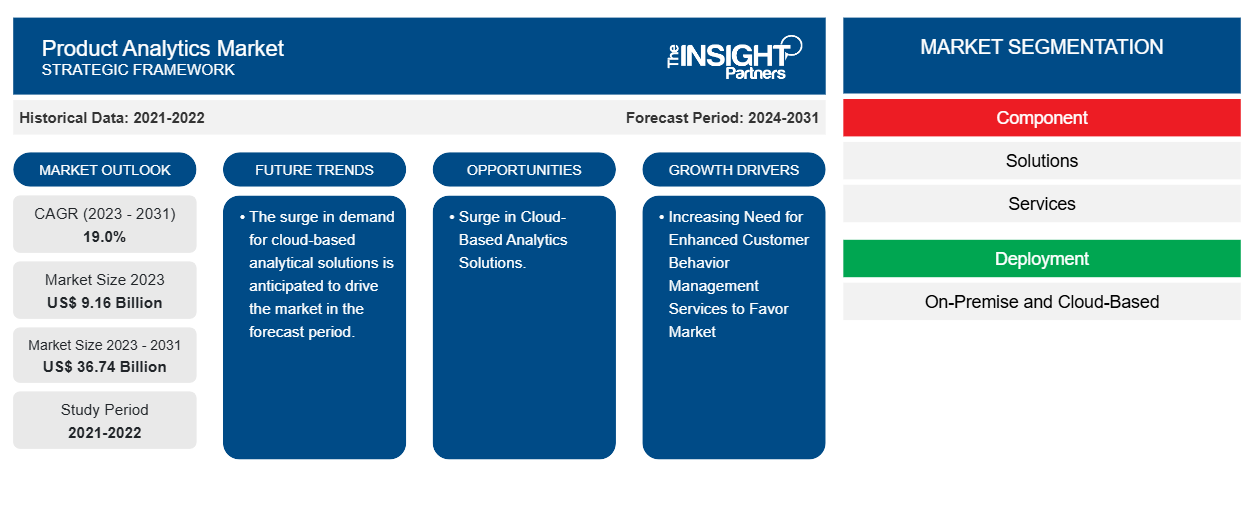产品分析市场规模预计将从 2023 年的 91.6 亿美元增至 2031 年的 367.4 亿美元。预计 2023-2031 年期间市场复合年增长率将达到 19.0%。对增强型客户行为管理服务的需求不断增长以及先进技术使用率的上升可能是市场的主要驱动力和趋势。
产品分析 市场分析
全球范围内的产品分析市场正在经历显著增长。这种增长归因于对增强型客户行为管理服务的需求不断增长以及先进技术的使用增加等因素。此外,对基于云的分析解决方案的需求激增预计将为产品分析市场带来诸多机遇。
产品分析市场概览
产品分析是分析用户如何留住产品或服务的方法。它使产品团队能够分析、跟踪、可视化用户参与度和行为数据。团队使用这些数据来优化和改进产品或服务。
定制此报告以满足您的需求
您可以免费定制任何报告,包括本报告的部分内容、国家级分析、Excel 数据包,以及为初创企业和大学提供优惠和折扣
-
获取此报告的关键市场趋势。这个免费样品将包括数据分析,从市场趋势到估计和预测。
产品分析市场驱动因素和机遇
增强客户行为管理服务的需求日益增加,以利于市场
随着许多企业了解个人客户的偏好和行为以定制个性化体验,对增强型客户行为管理服务的需求不断增长,这确实推动了产品分析市场的发展。市场上有几家公司提供产品分析以增强客户行为。例如,2023 年 3 月,Adobe 在 Adobe Experience Cloud中推出了新的 Adobe 产品分析。新应用程序通过统一营销和产品中的客户旅程洞察,重新构想了产品分析类别。专注于客户体验的团队首次可以从真正统一的客户视图中受益,并在整个组织中无缝协作,从而推动盈利增长。
基于云的分析解决方案激增。
基于云的分析解决方案激增,可以通过多种方式推动产品分析市场的发展。由于基于云的解决方案具有可扩展性,因此企业可以根据需求轻松调整其分析功能。此外,许多公司都提供基于云的分析解决方案。例如,SAP Analytics Cloud 解决方案是 SAP Business Technology Platform 的一部分,许多公司正在授权各个级别和技能水平的人员做出对其业务和社区产生重大影响的决策。
产品分析市场报告细分分析
有助于得出产品分析市场分析的关键部分是组件、部署、模式和垂直。
- 根据组件,产品分析市场分为解决方案和服务。预计解决方案部分将在预测期内占据相当大的市场份额。
- 根据部署情况,产品分析市场分为跟踪数据和分析数据。预计跟踪数据部分将在预测期内占据相当大的市场份额。
- 按垂直行业划分,市场分为零售和消费品、食品和饮料、医疗保健和制药、能源和公用事业、汽车、制造业等。预计零售和消费品将在预测期内占据相当大的市场份额。
按地区划分的产品分析市场份额分析
产品分析市场报告的地理范围主要分为五个区域:北美、亚太、欧洲、中东和非洲、南美和中美。
北美在产品分析市场中占据主导地位。北美地区各行业的高科技采用趋势推动了产品分析市场的增长。数字工具的采用率提高和政府机构在技术方面的高投入等因素预计将推动北美产品分析市场的增长。此外,美国和加拿大等发达经济体高度重视研发,这迫使北美参与者将技术先进的解决方案引入市场。此外,美国拥有大量产品分析市场参与者,他们越来越专注于开发创新解决方案。所有这些因素都促进了该地区产品分析市场的增长。
产品分析市场区域洞察
Insight Partners 的分析师已详细解释了预测期内影响产品分析市场的区域趋势和因素。本节还讨论了北美、欧洲、亚太地区、中东和非洲以及南美和中美洲的产品分析市场细分和地理位置。

- 获取产品分析市场的区域特定数据
产品分析市场报告范围
| 报告属性 | 细节 |
|---|---|
| 2023 年的市场规模 | 91.6亿美元 |
| 2031 年市场规模 | 367.4亿美元 |
| 全球复合年增长率(2023 - 2031) | 19.0% |
| 史料 | 2021-2022 |
| 预测期 | 2024-2031 |
| 涵盖的领域 |
按组件
|
| 覆盖地区和国家 |
北美
|
| 市场领导者和主要公司简介 |
|
产品分析市场参与者密度:了解其对业务动态的影响
由于消费者偏好的不断变化、技术进步以及对产品优势的认识不断提高等因素,最终用户需求不断增加,推动了产品分析市场快速增长。随着需求的增加,企业正在扩大其产品范围,进行创新以满足消费者需求,并利用新兴趋势,从而进一步推动市场增长。
市场参与者密度是指在特定市场或行业内运营的企业或公司的分布情况。它表明在给定市场空间中,相对于其规模或总市场价值,有多少竞争对手(市场参与者)存在。
在产品分析市场运营的主要公司有:
- Amplitude 公司
- Gainsight
- 堆公司
- IBM 公司
- Mixpanel
- Pendo.io 公司
免责声明:上面列出的公司没有按照任何特定顺序排列。

- 获取产品分析市场顶级关键参与者概览
产品分析市场新闻和最新发展
产品分析市场通过收集一手和二手研究后的定性和定量数据进行评估,其中包括重要的公司出版物、协会数据和数据库。以下列出了产品分析市场的一些发展情况:
- 领先的学习技术生态系统和 Canvas LMS 制造商 Instructure 推出了一款由人工智能和分析技术驱动的新产品 Intelligent Insights,它解锁了教育机构通常无法获得的自助报告功能。(来源:Instructure 公司网站,2024 年 6 月)
- LSEG(伦敦证券交易所集团)和道琼斯宣布建立新的多年期数据、新闻和分析合作伙伴关系。道琼斯将把 LSEG 的世界级数据和分析能力融入数字和印刷资产中,包括《华尔街日报》、《巴伦周刊》、《投资者商业日报》和 MarketWatch。(来源:LSEG 公司网站,2024 年 7 月)
产品分析市场报告覆盖范围和交付成果
“产品分析市场规模和预测(2021-2031)”报告对市场进行了详细的分析,涵盖以下领域:
- 范围内涵盖的所有主要细分市场的全球、区域和国家层面的产品分析市场规模和预测。
- 产品分析市场趋势以及市场动态,如驱动因素、限制因素和关键机遇。
- 详细的 PEST/波特五力分析和 SWOT 分析。
- 产品分析市场分析涵盖主要市场趋势、全球和区域框架、主要参与者、法规和最新的市场发展。
- 行业格局和竞争分析涵盖市场集中度、热图分析、知名参与者以及产品分析市场的最新发展。
- 详细的公司简介。
- 历史分析(2 年)、基准年、预测(7 年)及复合年增长率
- PEST和SWOT分析
- 市场规模、价值/数量 - 全球、区域、国家
- 行业和竞争格局
- Excel 数据集
近期报告
客户评价
购买理由
- 明智的决策
- 了解市场动态
- 竞争分析
- 客户洞察
- 市场预测
- 风险规避
- 战略规划
- 投资论证
- 识别新兴市场
- 优化营销策略
- 提升运营效率
- 顺应监管趋势























 获取免费样品 - 产品分析市场
获取免费样品 - 产品分析市场